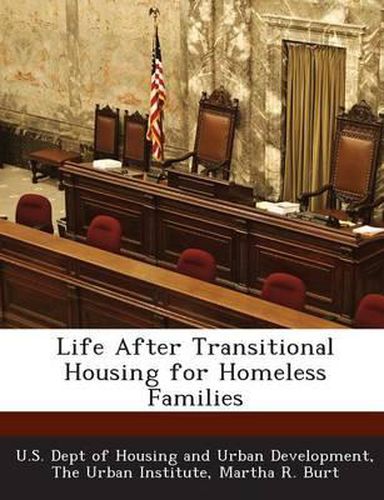Readings Newsletter
Become a Readings Member to make your shopping experience even easier.
Sign in or sign up for free!
You’re not far away from qualifying for FREE standard shipping within Australia
You’ve qualified for FREE standard shipping within Australia
The cart is loading…






Federal legislation to support the development of transitional housing programs for homeless people (TH) was first introduced in 1986, and ultimately incorporated into the first Stewart B. McKinney Act in 1987 as part of the U.S. Department of Housing and Urban Development’s (HUD) Supportive Housing Program (SHP). HUD’s division of Community Planning and Development has had responsibility for the SHP since 1989, when a new administration brought all the McKinney Act housing programs together within the new Office of Special Needs Assistance Programs, which manages and directs the program. By 1996 there were about 4,400 transitional housing programs offering about 160,000 beds (Burt et al. 1999). By 2007 there were almost 7,300 transitional housing programs offering about 211,000 beds. About 53 percent of the TH beds reported in 2007 are designated for families (HUD 2008), creating a capacity to serve about 40,000 families at a time.
$9.00 standard shipping within Australia
FREE standard shipping within Australia for orders over $100.00
Express & International shipping calculated at checkout
Federal legislation to support the development of transitional housing programs for homeless people (TH) was first introduced in 1986, and ultimately incorporated into the first Stewart B. McKinney Act in 1987 as part of the U.S. Department of Housing and Urban Development’s (HUD) Supportive Housing Program (SHP). HUD’s division of Community Planning and Development has had responsibility for the SHP since 1989, when a new administration brought all the McKinney Act housing programs together within the new Office of Special Needs Assistance Programs, which manages and directs the program. By 1996 there were about 4,400 transitional housing programs offering about 160,000 beds (Burt et al. 1999). By 2007 there were almost 7,300 transitional housing programs offering about 211,000 beds. About 53 percent of the TH beds reported in 2007 are designated for families (HUD 2008), creating a capacity to serve about 40,000 families at a time.